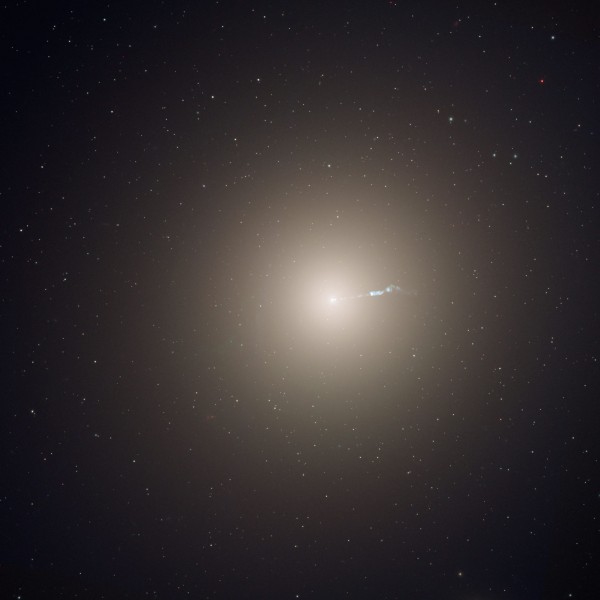
Astronomers at the Harvard-Smithsonian Center for Astrophysics announced this week (November 16, 2015) that they have a new technique for detecting thousands of stellar pulses from galaxies. They’ve successfully tried it on the supergiant elliptical galaxy Messier 87 (M87), located some 53 million light-years from Earth in the direction of our constellation Virgo. They say their new technique is like detecting heartbeats from a galaxy. Astronomer Charlie Conroy of the Harvard-Smithsonian Center for Astrophysics (CfA), who led the research, said:
It’s as if we’re taking the pulse of the galaxy.
These astronomers say their measurements offer a new way of determining a galaxy’s age. The journal Nature published their results online on November 16.
A statement from CfA explained:
We tend to think of stars as stable and unchanging. However, late in life stars like the sun undergo a significant transformation. They become very bright and swell up to an enormous size, swallowing any planets that are within Earth’s distance from the sun.
Near the end of their lifetime they begin to pulsate, increasing and decreasing their brightness by a large amount every few hundred days.
In our own Milky Way galaxy, many stars are known to be in this stage of life.
And distant galaxies, too, have these sorts of variable stars. CfA said:
No one had considered the effects of these stars on the light coming from more distant galaxies. In distant galaxies the light of each pulsating star is mixed in with the light of many more stars that are not varying in brightness.
These astronomers decided to see if the pulsations of these stars could be detected even if they couldn’t separate their light from “the sea of unchanging stars that are their neighbors.”
That’s when they turned their attention to a relatively nearby supergiant galaxy, M87. They examined a series of Hubble Space Telescope images, taken over the course of three months in 2006, and they quickly found what they were looking for. Pieter van Dokkum, a professor and chair of the astronomy department at Yale University said:
Amazingly, one in four pixels in the image changes with time.
We tend to think of galaxies as steady beacons in the sky, but they are actually ‘shimmering’ due to all the giant, pulsating stars in them.
Analysis of the Hubble data showed that the average pixel varies on a timescale of approximately 270 days. The regular up and down changes in brightness are reminiscent of a heartbeat.
Their discovery offers a new way of measuring the age of a galaxy, said the statement from CfA:
… because the strength and speed of a galaxy’s heartbeat varies depending on its age. The team finds that M87 is about 10 billion years old, a number that agrees with previous estimates using different techniques.
Their next step, said these astronomers, is to take the pulse of other galaxies.
Bottom line: No one had considered the effects of variable stars on the light coming from distant galaxies. Astronomers from the Harvard-Smithsonian Center for Astrophysics examined a series of Hubble Space Telescope images of the giant elliptical galaxy M87. They found that one in four pixels in the image changes with time. The galaxies must all be “shimmering” in this way, said these astronomers.











